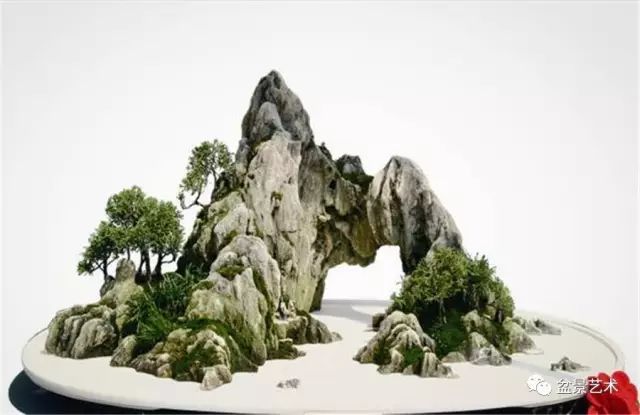Maintenance and management of succulent plants

First, the cultivated soil requires that the soil is loose, permeable and well drained, but it has a certain water retention capacity and is neutral or slightly acidic. Highland globules (Yuehua jade, amber jade) and peony can add a little more rice chaff ash and small-grained weathered rocks. Tall columnar species can be mixed with large grains of quartz sand to fix the plant.
Second, transplanting and planting should generally be carried out in the recovery period just after the plant dormancy. Root should be trimmed before planting. After root trimming, you should hang it for a few days and then plant it with wet soil. After planting, do not rush to water the sun and do not apply fertilizer within a month.
Third, the regulation of temperature and light cactus and succulent plants usually prefer warmth and a large temperature difference between day and night. Except for epiphytic cactus and 12-volume species, the light should be adequate, but soft. For this reason, except for a few flat stem nodes, tall columnar species and some tequila plants, they should be cultivated in the greenhouse all the year round.
Epiphytic types should be shaded except in winter, combined with cooling in summer, and the degree of shading should be 50% and 70%. Although epiphyllum and lotus have a certain degree of cold tolerance, keeping warm in winter is beneficial to blossom the following year. The measuring ruler, which is widely cultivated as a rootstock, is not cold-resistant and should maintain at least 5 ℃ in winter and require sufficient sunlight.
Most terrestrial cacti grow most vigorously under the condition of 28 ℃ 35 ℃ during the day and 10 ℃ at night. When the indoor temperature is often higher than 35 ℃ and 38 mol, the growth is stagnant, and some species of highland ball and pilose are easy to rot. Therefore, the temperature must be cooled, but the light should not be reduced as much as the epiphytic type.
Most terrestrial types can withstand a low temperature of 2 ℃ or even 0 ℃ while keeping the basin soil dry in winter, but can not be exposed to snow directly by frost. Rosette species native to the Caribbean and globular species that bloom in winter are kept at higher temperatures.
The succulent plants growing in summer can basically adjust the temperature with reference to terrestrial cacti. Their requirements for light are relatively low, and some species with expanded stem bases are not cold-resistant and should maintain a higher temperature in winter.
Succulent plants growing in winter should be ventilated and cooled to keep cool during the summer dormancy period. Sufficient sunshine is required in winter, and the lowest temperature should be maintained above 7 ℃.
Fourth, watering and fertilization watering should be carried out according to its growth state. No matter the type of dormancy in winter or summer, stop watering the basin during the dormancy period. But the types of summer dormancy must be sprinkled in aisles and other places to maintain a certain amount of air humidity. On the other hand, the plants in the vigorous growth period should fully meet their water demand. The seedlings should be watered more, but the big balls should be less (refers to the times); the terrestrial type should be watered less, and the epiphytic type should be watered more; the buds and blossoms should be watered more, the flowers and fruits laggard and less; the leaves with more and thinner leaves should be watered more, and the leaves with thicker but less leaves should be watered less.
- Prev

Sparrow plum bonsai fertilization is fastidious
Sparrow plum is one of the seven sages of bonsai and is very favored by bonsai friends. Sparrow plum bonsai fertilization should be fastidious, too much fertilizer, branches and leaves grow, lack of fertilizer, the branches are thin and weak, the leaves turn yellow, and are vulnerable to diseases and insect pests. Therefore, there should be principles in fertilization: new planting, the first pot.
- Next

A brief introduction to the steps of Landscape Bonsai
Landscape bonsai is a kind of bonsai mainly for ornamental rocks. To make landscape bonsai, we must first carry out artistic conception, determine the theme, and then take all or part of the stone materials suitable for shape according to the natural temperament of the rocks.
Related
- Wuhan Hospital Iron Tree Blooming Result Was Instantly Frightened by the Gardener Master
- Which variety of camellia is the most fragrant and best? Which one do you like best?
- What is the small blue coat, the breeding methods and matters needing attention of the succulent plant
- Dormancy time and maintenance management of succulent plants during dormancy
- Minas succulent how to raise, Minas succulent plant pictures
- What are the varieties of winter succulent plants
- How to raise succulent plants in twelve rolls? let's take a look at some experience of breeding twelve rolls.
- Attention should be paid to water control for succulent plants during dormant period (winter and summer)
- Watering experience of twelve rolls of succulent plants
- Techniques for fertilizing succulent plants. An article will let you know how to fertilize succulent plants.

